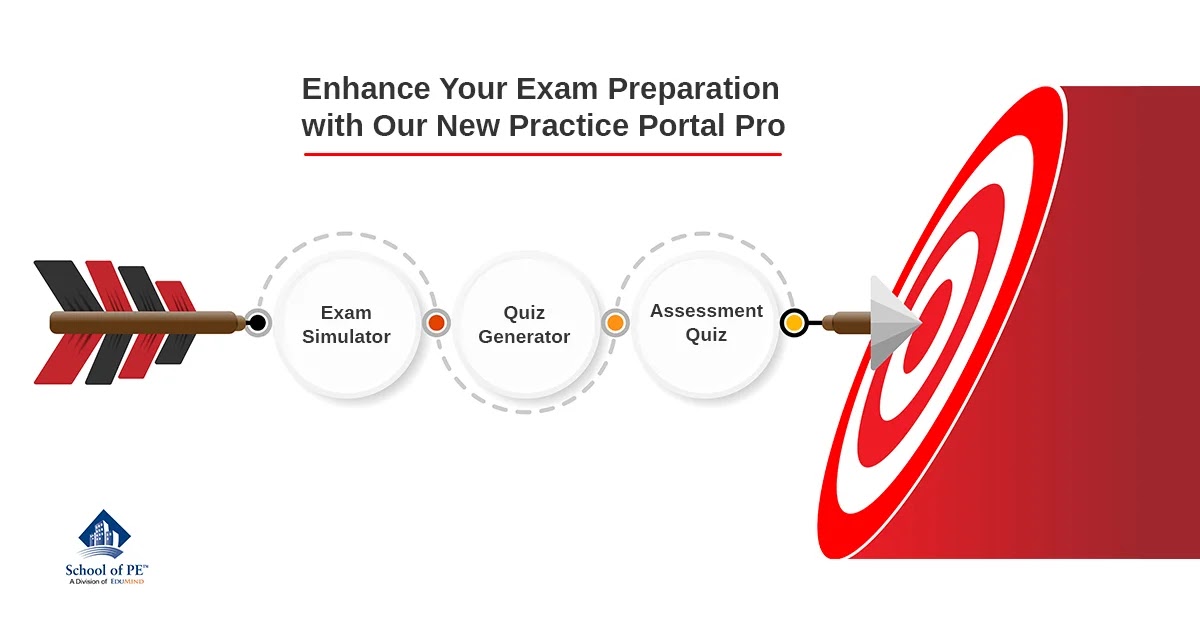
Monday, 16 November 2020
Enhance Your Exam Preparation with Our New Question Bank

Monday, 9 November 2020
Introducing the New FE Civil Exam Review Guide from School of PE
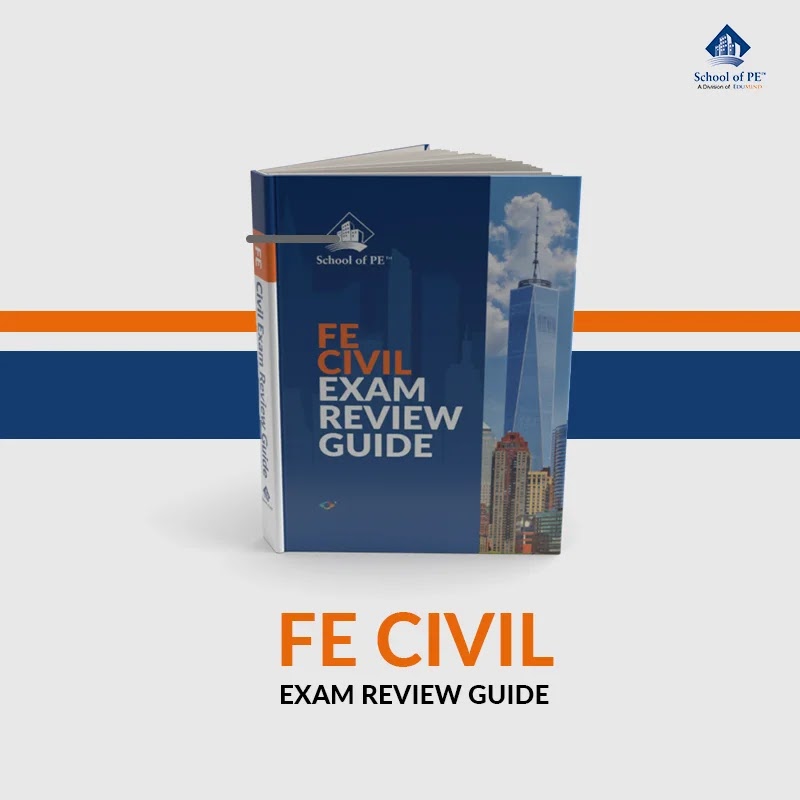
Thursday, 22 October 2020
Introducing the Reimagined Study Hub from School of PE

Monday, 19 October 2020
10 Surveying Terms You Need to Know to Pass the CA Surveying Exam
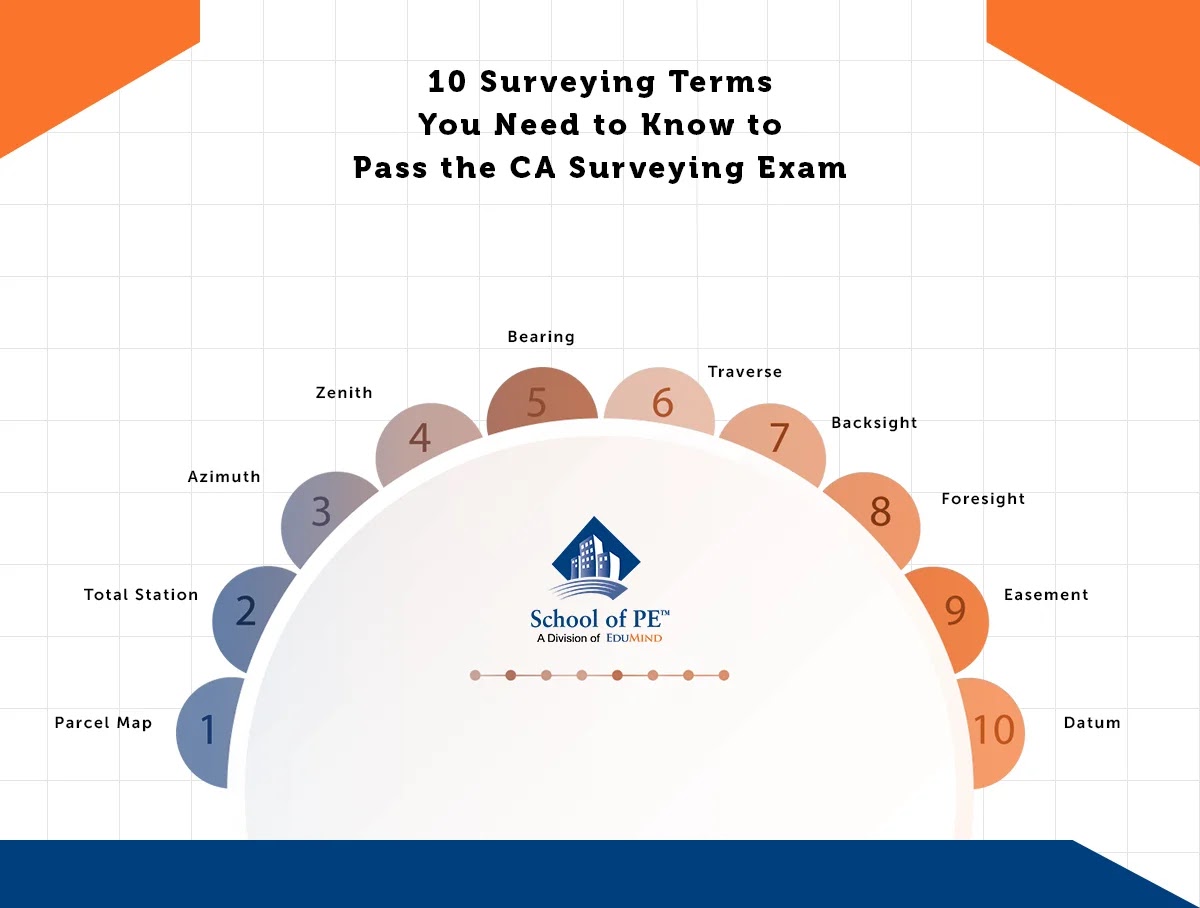
Monday, 12 October 2020
PE Civil Exam: Tips for Determining Your Depth Section Subject
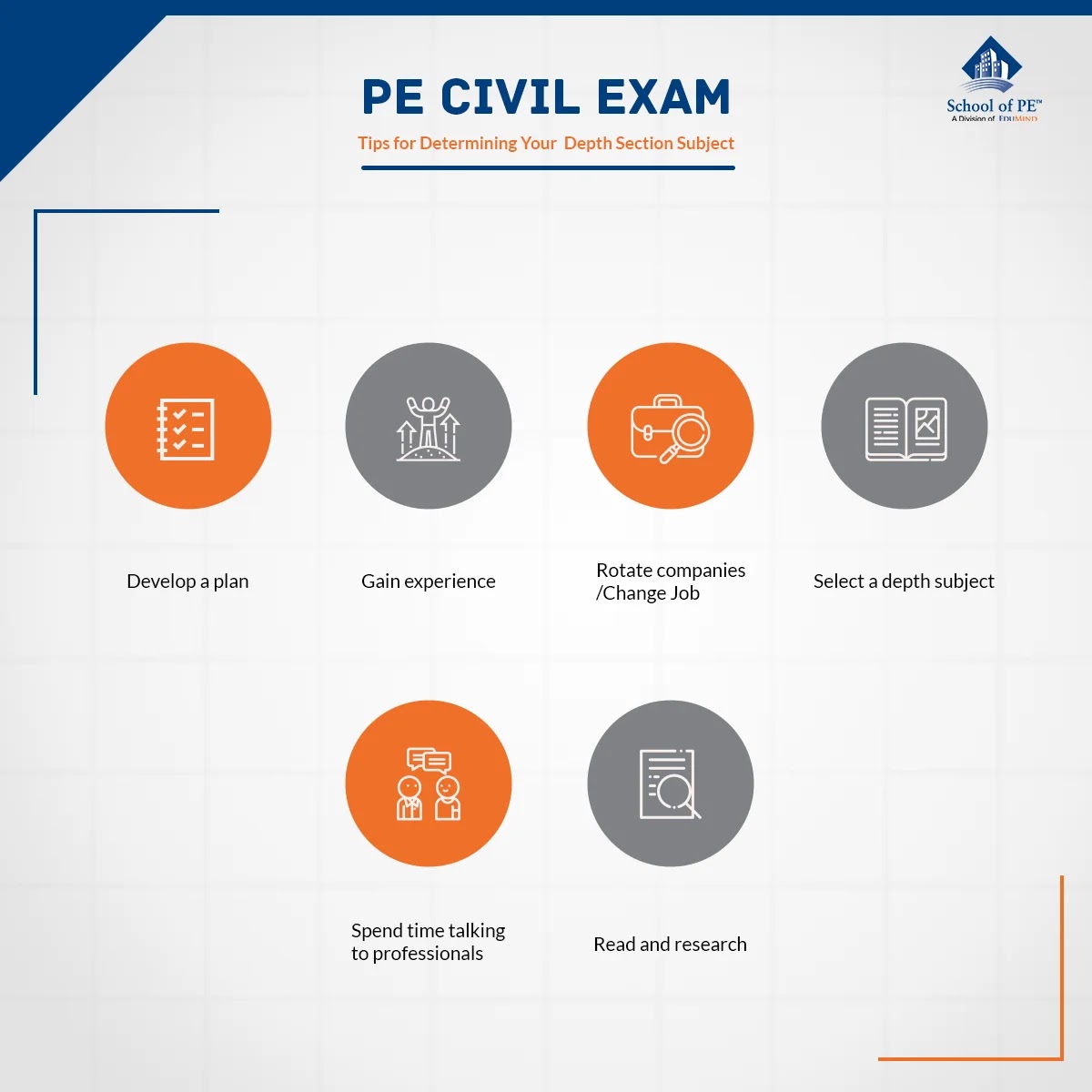
Sidney May is a multi-state licensed Civil Engineer with over 15 years of work experience in Civil and Environmental Engineering. She holds a B.S. in Civil Engineering. Her expertise includes public works processes; managing capital improvements projects; developing project scopes and budgets; preparing design drawings; developing project specifications; and managing construction projects. Sidney develops course content; teaches refresher courses; and has co-authored the Civil Exam Transportation Depth Review Guide for the School of PE. Her civic duties include volunteering with S.T.E.A.M programs; serving as a professional mentor for the University of Alabama civil engineering students; and serving in leadership roles within the ASCE.
Tuesday, 6 October 2020
Six Tips to Pass the Civil PE Exam Breadth Section

Sidney May is a multi-state licensed Civil Engineer with over 15 years of work experience in Civil and Environmental Engineering. She holds a B.S. in Civil Engineering. Her expertise includes public works processes; managing capital improvements projects; developing project scopes and budgets; preparing design drawings; developing project specifications; and managing construction projects. Sidney develops course content; teaches refresher courses; and has co-authored the Civil Exam Transportation Depth Review Guide for the School of PE. Her civic duties include volunteering with S.T.E.A.M programs; serving as a professional mentor for the University of Alabama civil engineering students; and serving in leadership roles within the ASCE.
Monday, 28 September 2020
8 Quick Tips About the PE Civil Exam
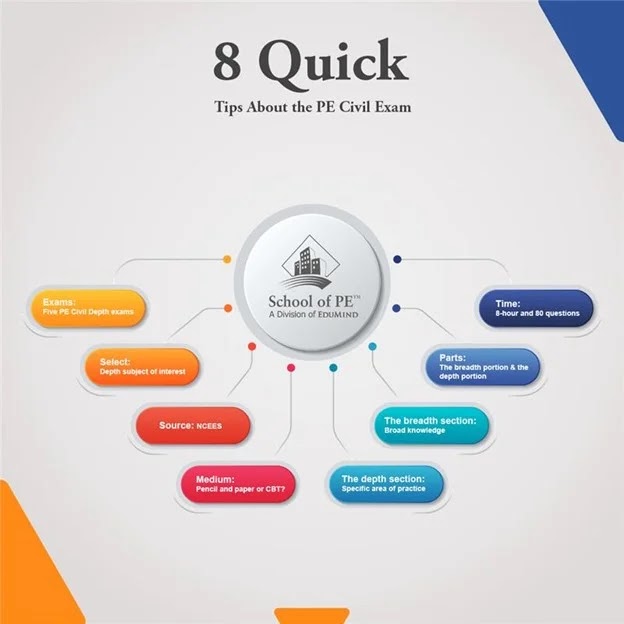
Sidney May is a multi-state licensed Civil Engineer with over 15 years of work experience in Civil and Environmental Engineering. She holds a B.S. in Civil Engineering. Her expertise includes public works processes; managing capital improvements projects; developing project scopes and budgets; preparing design drawings; developing project specifications; and managing construction projects. Sidney develops course content; teaches refresher courses; and has co-authored the Civil Exam Transportation Depth Review Guide for the School of PE. Her civic duties include volunteering with S.T.E.A.M programs; serving as a professional mentor for the University of Alabama civil engineering students; and serving in leadership roles within the ASCE.
Monday, 21 September 2020
10 Strategies to Pass the California Surveying Exam the First Time

Ms. Kelly is an experienced structural engineer with a focus on seismic risk. She has extensive experience in structural failure investigations, seismic structural design, and seismic risk assessments. Through the School of P.E., she has taught a 32-hour course for the California Seismic P.E. Exam, authored several blog posts, and contributed to other review products. She has a Bachelor of Science in Civil Engineering from Johns Hopkins University and a Masters of Engineering in Structural Engineering from Lehigh University.
Monday, 14 September 2020
Pass the PE Civil Exam: Strategies to Overcome Failure
Sidney May is a multi-state licensed Civil Engineer with over 15 years of work experience in Civil and Environmental Engineering. She holds a B.S. in Civil Engineering. Her expertise includes public works processes; managing capital improvements projects; developing project scopes and budgets; preparing design drawings; developing project specifications; and managing construction projects. Sidney develops course content; teaches refresher courses; and has co-authored the Civil Exam Transportation Depth Review Guide for the School of PE. Her civic duties include volunteering with S.T.E.A.M programs; serving as a professional mentor for the University of Alabama civil engineering students; and serving in leadership roles within the ASCE.
Monday, 7 September 2020
PE Civil Exam Preparation Guidelines
Sidney May is a multi-state licensed Civil Engineer with over 15 years of work experience in Civil and Environmental Engineering. She holds a B.S. in Civil Engineering. Her expertise includes public works processes; managing capital improvements projects; developing project scopes and budgets; preparing design drawings; developing project specifications; and managing construction projects. Sidney develops course content; teaches refresher courses; and has co-authored the Civil Exam Transportation Depth Review Guide for the School of PE. Her civic duties include volunteering with S.T.E.A.M programs; serving as a professional mentor for the University of Alabama civil engineering students; and serving in leadership roles within the ASCE.
Monday, 31 August 2020
10 California Engineering Surveying Studying Tips
Ms. Kelly is an experienced structural engineer with a focus on seismic risk. She has extensive experience in structural failure investigations, seismic structural design, and seismic risk assessments. Through the School of P.E., she has taught a 32-hour course for the California Seismic P.E. Exam, authored several blog posts, and contributed to other review products. She has a Bachelor of Science in Civil Engineering from Johns Hopkins University and a Masters of Engineering in Structural Engineering from Lehigh University.
Monday, 24 August 2020
Does Passing the CA Surveying Exam Make You a Licensed Surveyor?
- Create and use topographic maps
- Set construction stakes after control points are established
- Create contour surveys using photogrammetry
- Become a city engineer
- Create a tentative map (a preliminary subdivision or parcel map)
- Prepare civil plans
- Use ALTA (American Land Title Surveys) to create grading plans
- Set and relocate monuments or control points
- Re-establish benchmark elevations
- Replace lost corners
- Prepare legal descriptions
- Prepare parcel or subdivision maps
- Prepare boundary/property surveys
- Perform boundary line adjustments
- Perform geodetic surveying
- Replace lost corners
- Establish easements
- Create right-of-way maps
Ms. Kelly is an experienced structural engineer with a focus on seismic risk. She has extensive experience in structural failure investigations, seismic structural design, and seismic risk assessments. Through the School of P.E., she has taught a 32-hour course for the California Seismic P.E. Exam, authored several blog posts, and contributed to other review products. She has a Bachelor of Science in Civil Engineering from Johns Hopkins University and a Masters of Engineering in Structural Engineering from Lehigh University.
Monday, 17 August 2020
Five Types of Problems to Expect on the California Surveying Exam
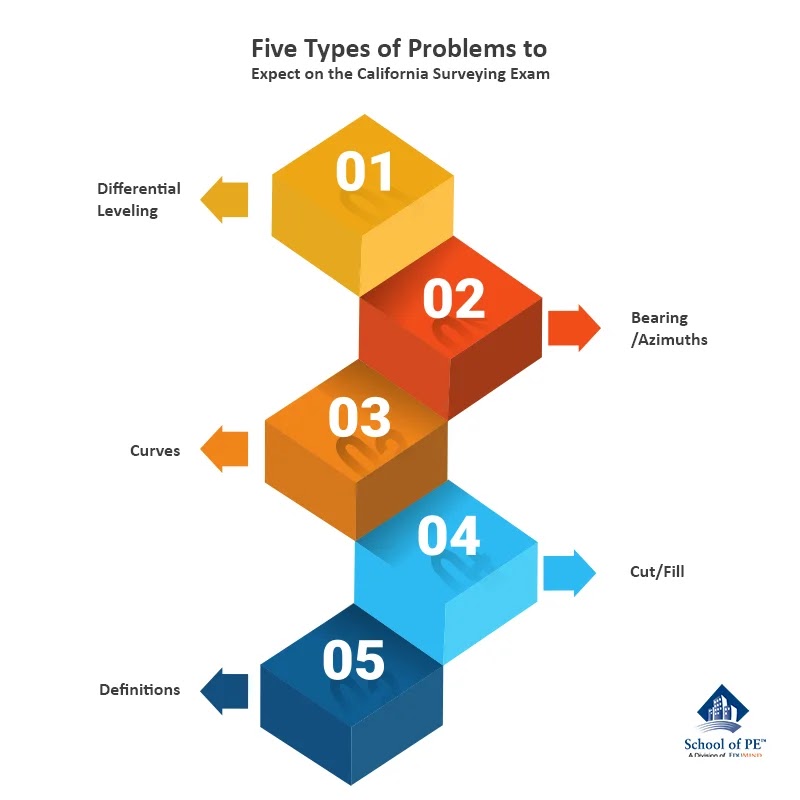
Ms. Kelly is an experienced structural engineer with a focus on seismic risk. She has extensive experience in structural failure investigations, seismic structural design, and seismic risk assessments. Through the School of P.E., she has taught a 32-hour course for the California Seismic P.E. Exam, authored several blog posts, and contributed to other review products. She has a Bachelor of Science in Civil Engineering from Johns Hopkins University and a Masters of Engineering in Structural Engineering from Lehigh University.
Sunday, 9 August 2020
Errors in Surveying: How to Identify and Calculate for the CA Surveying Exam
Ms. Kelly is an experienced structural engineer with a focus on seismic risk. She has extensive experience in structural failure investigations, seismic structural design, and seismic risk assessments. Through the School of P.E., she has taught a 32-hour course for the California Seismic P.E. Exam, authored several blog posts, and contributed to other review products. She has a Bachelor of Science in Civil Engineering from Johns Hopkins University and a Masters of Engineering in Structural Engineering from Lehigh University.
Monday, 3 August 2020
Four Strategies for Tackling Scale Problems on the CA Surveying Exam
Ms. Kelly is an experienced structural engineer with a focus on seismic risk. She has extensive experience in structural failure investigations, seismic structural design, and seismic risk assessments. Through the School of P.E., she has taught a 32-hour course for the California Seismic P.E. Exam, authored several blog posts, and contributed to other review products. She has a Bachelor of Science in Civil Engineering from Johns Hopkins University and a Masters of Engineering in Structural Engineering from Lehigh University.
Monday, 27 July 2020
The Five Best Ways to Prepare for the CA Surveying Exam

Ms. Kelly is an experienced structural engineer with a focus on seismic risk. She has extensive experience in structural failure investigations, seismic structural design, and seismic risk assessments. Through the School of P.E., she has taught a 32-hour course for the California Seismic P.E. Exam, authored several blog posts, and contributed to other review products. She has a Bachelor of Science in Civil Engineering from Johns Hopkins University and a Masters of Engineering in Structural Engineering from Lehigh University.
Monday, 20 July 2020
Three Must-Know Skills to Pass the California Surveying Exam
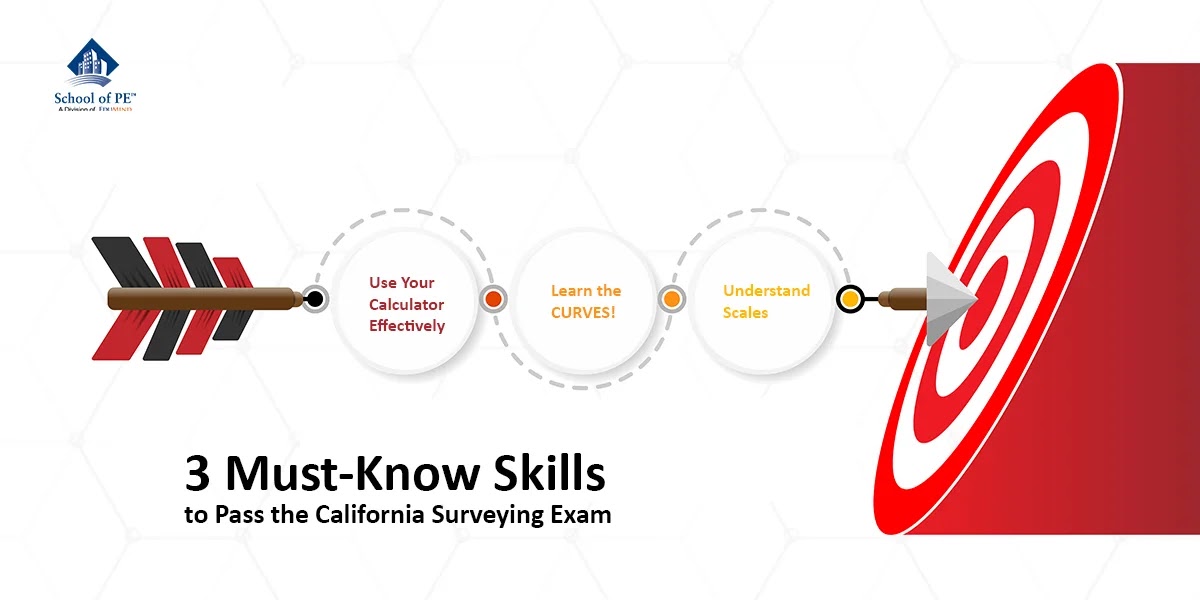
Ms. Kelly is an experienced structural engineer with a focus on seismic risk. She has extensive experience in structural failure investigations, seismic structural design, and seismic risk assessments. Through the School of P.E., she has taught a 32-hour course for the California Seismic P.E. Exam, authored several blog posts, and contributed to other review products. She has a Bachelor of Science in Civil Engineering from Johns Hopkins University and a Masters of Engineering in Structural Engineering from Lehigh University.
Monday, 13 July 2020
Everything You Need to Know About the CA Surveying Exam
Ms. Kelly is an experienced structural engineer with a focus on seismic risk. She has extensive experience in structural failure investigations, seismic structural design, and seismic risk assessments. Through the School of P.E., she has taught a 32-hour course for the California Seismic P.E. Exam, authored several blog posts, and contributed to other review products. She has a Bachelor of Science in Civil Engineering from Johns Hopkins University and a Masters of Engineering in Structural Engineering from Lehigh University.
Monday, 6 July 2020
What is ductility and why is it important for earthquake resistant structure?
Ms. Kelly is an experienced structural engineer with a focus on seismic risk. She has extensive experience in structural failure investigations, seismic structural design, and seismic risk assessments. Through the School of P.E., she has taught a 32-hour course for the California Seismic P.E. Exam, authored several blog posts, and contributed to other review products. She has a Bachelor of Science in Civil Engineering from Johns Hopkins University and a Masters of Engineering in Structural Engineering from Lehigh University.
Monday, 29 June 2020
California's Current and Former Structural Ordinances
Ms. Kelly is an experienced structural engineer with a focus on seismic risk. She has extensive experience in structural failure investigations, seismic structural design, and seismic risk assessments. Through the School of P.E., she has taught a 32-hour course for the California Seismic P.E. Exam, authored several blog posts, and contributed to other review products. She has a Bachelor of Science in Civil Engineering from Johns Hopkins University and a Masters of Engineering in Structural Engineering from Lehigh University.
Monday, 22 June 2020
Lessons from the ASCE 41 Basic Checklist
Ms. Kelly is an experienced structural engineer with a focus on seismic risk. She has extensive experience in structural failure investigations, seismic structural design, and seismic risk assessments. Through the School of P.E., she has taught a 32-hour course for the California Seismic P.E. Exam, authored several blog posts, and contributed to other review products. She has a Bachelor of Science in Civil Engineering from Johns Hopkins University and a Masters of Engineering in Structural Engineering from Lehigh University.
